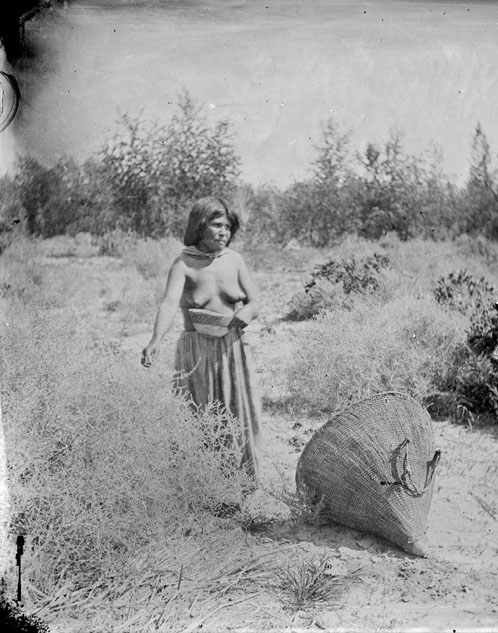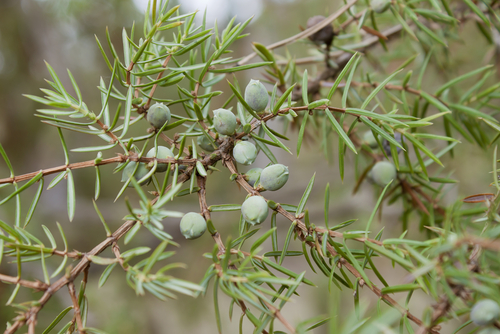Settlement and Subsistence
|
Paiute territory is characterized by great elevational and ecological diversity, but also by low precipitation and a corresponding low density and diversity in biomass. To most of us, finding food in this territory would seem nearly impossible, but the Paiute were impressive naturalists who were intimately familiar with the available resources. Early ethnographers report that the Paiute collected more than one hundred edible wild plants and left almost no animal species uneaten. The low biomass productivity of their environment required that they made use of all edible resources on the landscape and moved frequently to locate new resources. Woman gathering seeds in large basket, 1873 Source - http://sirismm.si.edu/naa/baegn/gn_01641.jpg
|
Prior to the Anglo encroachment on their territories the Southern Paiute were foragers, though some groups also practiced some casual farming. Although the seasonal subsistence cycle varied depending on what part of the territory a group occupied, a typical Paiute year might involve foraging for grass seeds and collecting tortoises and lizards during the summer. Those groups near permanent watercourses might also plant crops but they rarely stayed to tend them. During the fall, they might move to a higher elevation area to collect yucca fruits and pinyon nuts or to foothill locations to collect mesquite pods. Fall was the most plentiful time of the year, and all groups stored as much food as possible during this time to safeguard against winter and spring shortages. Winter would be spent in the foothills, canyons or mountains hunting rabbit and large game and subsisting off stored foods. Spring was generally the most difficult time of the year since food stores would be running low and edible plants were not yet available. When food caches were exhausted, the Paiute would turn to foods they ordinarily considered unpalatable such as catepillars, locusts, rattlesnakes, and juniper berries. Because of the scarcity of water in the area, springs were important resources and ones that were privately owned and inherited through the male line. During the summer, when washes fed by snow melt had dried up, families camped near these springs.
Juniper berries, though not favored, would be eaten in times of famine Source - http://www.shutterstock.com/pic.mhtml?id=76846132&src=id
|
Click on next page to continue.


